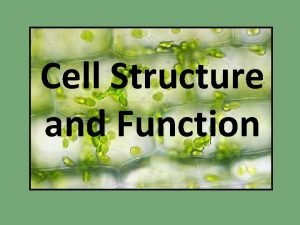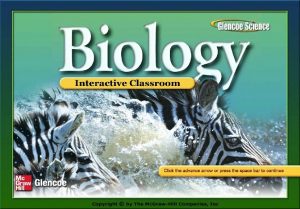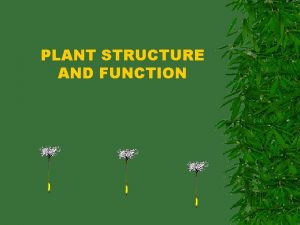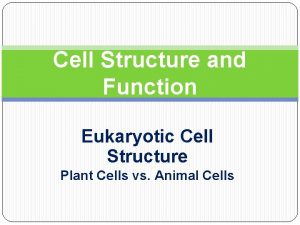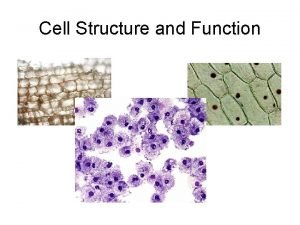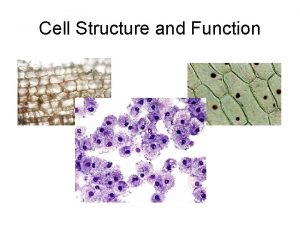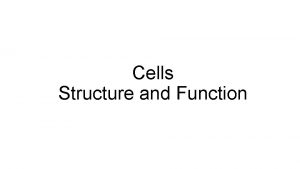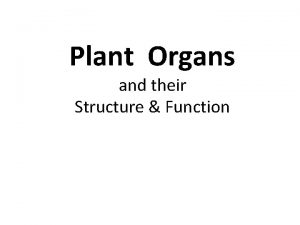Cell Structure and Function Representative Plant Cell Representative











- Slides: 11

Cell Structure and Function

Representative Plant Cell

Representative Animal Cell

Most cells are microscopic Amoeba Neurons Yeast Cells Bacteria Skeletal Muscle

Discovery of Cells The discovery of cells was made possible by the development of the microscope in the early 17 th century.

In 1665, Robert Hooke used a microscope to examine a thin slice of cork. He described it as consisting of “a great many little boxes. ” The “boxes” reminded him of the small rooms in which monks lived, so he called them cells.

Robert Hooke observed the remains of dead plant cells. The first person to observe living cells was Anton Van Leeuwenhoek in 1673. Van Leeuwenhoek called the organisms he observed in pond water “wee beasties” or “animalcules. ”

THE CELL THEORY Evidence for the cell theory was provided by a trio of scientists: Schleiden 1838 Schwann 1839 Virchow 1855 Together, these scientists proposed the following Cell Theory. • All living things are composed of one or more cells. • Cells are the basic unit of structure and function in an organism. • Cells come only from the reproduction of preexisting cells.

PROKARYOTES AND EUKARYOTES

Prokaryotes are cells that do not have a nucleus and do not have membrane bound organelles. These cells are smaller than eukaryotes and are believed to have existed 3. 5 billion years ago as the first cells on earth. Examples: bacteria, blue-green bacteria (cyanobacteria) and archeabacteria are prokaryotes. Archeabacteria are the bacteria that are found in very harsh conditions such as thermal vents and hot springs.

Eukaryotes are cells that contain a nucleus and membrane bound organelles such as mitochondria. The nucleus is the control center for all cell activity. The mitochondria is where cell respiration takes place. In the mitochondria energy is released to support cell activities. Examples: all plant, protist, fungi and animal cells are eukaryotes.
 Rough er function
Rough er function Representative animal cell
Representative animal cell Cell wall function
Cell wall function Venn diagram plant cell and animal cell
Venn diagram plant cell and animal cell Tonoplast
Tonoplast Differences between plant animal and bacterial cells
Differences between plant animal and bacterial cells Idealized plant cell
Idealized plant cell Comparing animal and plant cells venn diagram
Comparing animal and plant cells venn diagram Flexible covering of an animal cell
Flexible covering of an animal cell Chapter 22 plant structure and function answer key
Chapter 22 plant structure and function answer key Chapter 21 plant structure and function
Chapter 21 plant structure and function Section 23-4 leaves
Section 23-4 leaves

